Your Easter Decor, candy Basket, Bunny Wreath, and easter table centerpiece are ready? Why not add an Easter Cactus to strike your pastel decor this easter? Are you making spring more colorful this year with your pastel easter decoration?
What is an Easter Cactus?
The Easter cactus is a tropical beauty that brightens up any area with its star-shaped blossoms. This Brazilian epiphytic beauty comes from the lush rainforests, unlike its brethren in the desert. While not technically a true cactus, it shares similar needs: bright, indirect light, well-draining soil, and moderate watering.
Easter cacti burst into a brilliant flower show in the spring (March to May). These gorgeous stars are available in a variety of hues, including the traditional red and white as well as vivid pink, orange, and lavender. Each bloom adds a touch of charm to your house and usually lasts for several weeks, opening at dawn and closing at dark.
Have you ever woken up to find your once vibrant Easter Cactus looking a little worse for wear? Drooping stems, discolored leaves or a stubborn refusal to bloom can send even the most seasoned plant parent into a panic. Fear not, This little guide is here to be your Easter Cactus whisperer, helping you diagnose common issues and get your prickly friend back on the path to blooming glory.
Step1: Understanding Your Easter Cactus:
- Light Requirements
- Watering Needs
- Temperature Preferences
- Bloom Cycle
Step1:Understanding Your Easter Cactus

The Easter Cactus, also called the Schlumbergera, prefers the cooler, indirect sunshine found in our houses, unlike its relatives who live in the desert. Think of it as the insecure, shy cactus that would rather be in soft light than in the strong light from a south-facing window. However, don’t let its gentle appearance deceive you! When springtime arrives, this hardy plant bursts into a show of pink, purple, red, or white blossoms.
Knowing what your Easter cactus requires is essential to keeping it happy. It doesn’t enjoy significant changes in its surroundings, just like ourselves. Consider the Three Bears and Goldilocks: neither too hot nor too cold, and neither too wet nor too dry. Finding that sweet spot is crucial for maintaining healthy growth and those coveted blooms.
Light Requirements: Finding the Sun-Kissed Sweet Spot
Think of your Easter Cactus as a sunbather who would much rather lounge beneath a shaded umbrella than bake in the sun. Although it requires some light for photosynthetic processes and the production of those lovely blossoms, excessive sun exposure can result in bleached leaves and burned stems. Consider windows facing north or east, light that has been filtered by sheer curtains, or even a location a short distance from a window that lets in more light. Keep in mind that even a seemingly insignificant change in the sun’s angle can have a significant impact on your plant, so be alert for any indications of unhappiness.
Watering Needs: Striking the Delicate Balance
For most cacti, overwatering is the worst thing to do, and the Easter Cactus is no exception. Its thin root structure grows best in soil that drains properly and lets excess water run. Consider it similar to walking a tightrope: you want the soil to be just barely damp, never waterlogged. To measure the amount of moisture in the soil, stab your finger about an inch deep into the ground. Don’t water it if it feels wet. When the soil seems fully dry to the touch, water deeply, letting any extra water runoff. Remember that soaking a plant too deeply might result in fading and reduced development. But believe me, underwatering is a lot simpler to correct than overwatering-caused root rot.
Temperature Preferences: Keeping Your Plant Cool and Collected
The Easter Cactus enjoys a colder climate than most other cactus, which crave the heat of the desert. Consider temperatures in the range of 60 to 75°F (15 to 24°C). Avoid clear drafty windows, radiators, and air vents because these might stress out your plant due to abrupt changes in temperature. Think of it as your favorite sweater—cozy and comfortable without being stuffy or oppressive. Choosing the ideal location for your plant within your house can have a profound impact on its general well-being.
Bloom Cycle: The Grand Finale of Patience and TLC
Although the Easter Cactus blossoms are a joy to behold, they take time to develop. Plant parents who are patient with their plants will be rewarded with a brilliant display when these seasonal stunners bloom in late winter or early spring. But don’t give up if your cactus is adamantly refusing to develop buds! Blooming is influenced by a number of circumstances, but with a little care, you may make those stunning blossoms appear.
Step 2: Common Easter Cactus Issues and Treatments
- Drooping Stems
- Leaf Discoloration
- Bud Drop
- Pests and Diseases
Step 2: Easter Cactus SOS
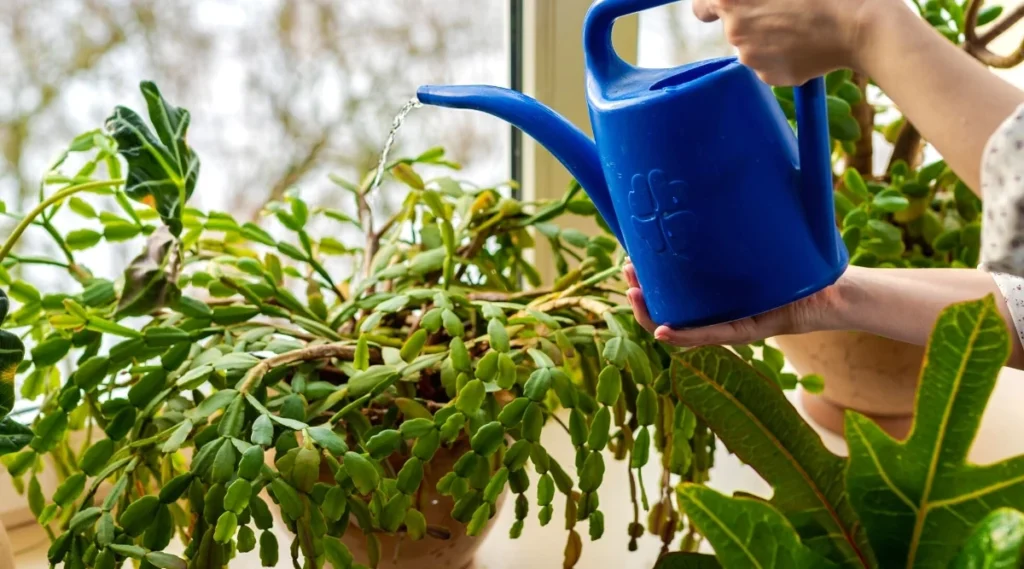
After determining the perfect growing environment for your Easter cactus, let’s get to the less enjoyable part: identifying and resolving any frequent problems that may be ailing your plant. But don’t be concerned! Like a detective putting together hints, we can identify the issue and help your irritable friend get back on track by using the symptoms.
Drooping Stems
Seeing your Easter Cactus stems losing their perkiness can be alarming. But fear not, plant parent! This seemingly dramatic display could be signaling several different issues:
- The Thirsty Traveler
Recall the fragile equilibrium we discussed in Part 1? In the event that the stems are beginning to shrivel and the earth feels extremely dry, it is possible that your cactus is exhibiting symptoms of dehydration. After giving it a healthy drink and letting any extra water drain out, it should wake up in a few hours. But exercise caution! An additional degree of drooping and root rot might result from overwatering.
- The Drowning Victim
On the other hand, if the soil feels very wet and the stems seem to be mushy, you may have overwatered. In this situation, you should take the following urgent action: carefully take the cactus out of its pot, examine it for root rot (soft, brown, mushy roots), and cut off any damaged ones with sterile shears. Repot in a fresh mixture of cacti that drains well, making sure that proper drainage is in place. As always, prevention is key—watering only when the soil feels dry to the touch.
- The Temperature Drama Queen
Sudden temperature fluctuations can also cause your Easter Cactus to droop. Avoid placing it near drafty windows, radiators, or air vents. Aim for consistent temperatures between 60-75°F (15-24°C). Think of it as providing your plant with a comfortable, stable environment to avoid unnecessary stress.
Leaf Discoloration: A Colorful Clue to Underlying Issues
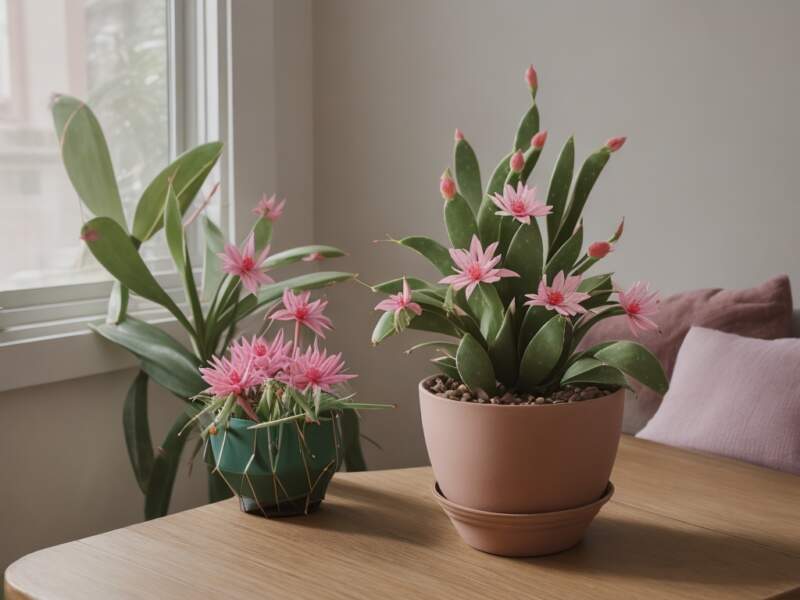
Image by NESTIC HOME
While the Easter Cactus boasts a variety of natural color variations, sudden changes in leaf color can indicate different problems:
The Sunburnt Survivor: Sunburn may be indicated by bright red or yellow areas on the leaves. Instead of placing your plant in the direct sun, place it in filtered light. Recall to picture a cool oasis rather than a blazing desert!
The deficiency in Nutrients: A deficiency of nutrients may be indicated by pale leaves. Once a month during the spring and summer growing season, fertilize your Easter Cactus using a diluted, balanced fertilizer. However, exercise caution to avoid overfertilizing, as this can have negative effects.
The issue with pests: Mealybug or spider mite infestations may be indicated by tiny white webs or cottony masses on the leaves and stems. These unwanted visitors have the potential to drain your plant’s sap, which could result in yellowed leaves and slowed growth. Address them promptly using insecticidal soap or neem oil solutions. Early intervention is key!
Bud Drop: The Frustrating Case of Unfulfilled Blooms
Nothing stings quite like seeing those precious flower buds mysteriously drop before they even get a chance to shine. But don’t lose hope! Here are some potential culprits:
The Light Scrooge: Recall how we talked about how light is necessary for growth? A lack of light might cause buds to droop. Make sure your Easter cactus gets 12 to 14 hours of indirect sunshine per day, especially when the buds are forming.
The Temperature Troublemaker: Variable temperatures can stress your plant and result in bud drop, much like drooping stems. To promote flowering, maintain a steady temperature range of 60–75°F (15–24°C).
The Problem of Watering: The delicate process of blossoming can also be upset by inconsistent watering. To prevent stressing your plant, use the “deep soak and let dry” method that was previously advised.
The Fiddling Bud Frenzy: Control that urge to wiggle or touch the flower buds all the time. This may limit their growth and cause them to stop growing.
Step 3: Prevention Tips for a Healthy Easter Cactus
- Choosing the Right Pot and Soil
- Fertilizing During Growth
- Pruning for Shape and Blooms
- Repotting
Easter Cactus SOS: Prevention is the Best Bloom Booster!

By now, you’re equipped with the knowledge to diagnose common ailments plaguing your Easter Cactus. But wouldn’t it be better to prevent these issues altogether and ensure your spiky friend thrives year after year? Fear not, plant parent! In this final part, we’ll unveil preventive tips and best practices to keep your Easter Cactus blooming with vibrant joy.
Choosing the Right Pot and Soil: The Foundation for Flourishing
Pot with Personality: Choose a terracotta or ceramic pot with drainage holes instead than the typical plastic pot. These materials promote improved air circulation and keep roots from getting wet, which is essential for root health. Recall that size counts! To avoid overwatering, use a pot that is just big enough to accommodate future development but not so enormous that it is larger than the root ball.
The Story of the Soil: You can’t use regular potting mix here. Choose a cactus mix that is designed especially for cacti and succulents and has good drainage. These mixtures have the ideal proportion of drainage ingredients, such as pumice or perlite, which allows extra water to drain away and keeps roots from rotting. Consider it as a specially constructed soil fortress where the roots of your plant can flourish.
Fertilizing for Fabulous Blooms
Although it doesn’t require continuous feeding, your Easter Cactus will benefit from a little fertilizer applied throughout the spring and summer to help it thrive and bloom. But never forget that little is more! Apply a monthly application of diluted balanced fertilizer, following the directions on the container. Consider it more like a thin dusting of magic dust than a torrential downpour! As your plant enters its dormant phase in the fall and winter, fertilizer should be avoided.
Pruning for Perfection: Shaping and Encouraging Blooms
Trimming your Easter Cactus is nothing to be terrified of! Frequent trimming produces more blooms and bushier growth. After the blossoming period, which is in late winter or early spring, is the ideal time to prune. Trim wasted flower stalks, weak or lanky stems, and any damaged segments with sterile shears. Recall to prune sparingly, preferring to make gradual cuts that will result in an overall balanced shape. Consider it more of a trim that brings out the inherent beauty of your plant than a dramatic transformation!
Repotting: Giving Your Plant Room to Grow
Your Easter Cactus may overrun its pot as it gets bigger. Repotting maintains appropriate drainage and helps prevent a growing population of roots every two to three years. Select a pot that is only marginally bigger than the root ball and fill it with recently purchased, well-draining cacti mix. After repotting, give the plant plenty of water and wait a few weeks before fertilizing to give it time to adjust to its new location. Consider it as providing your plant with a roomy makeover so it can keep growing!
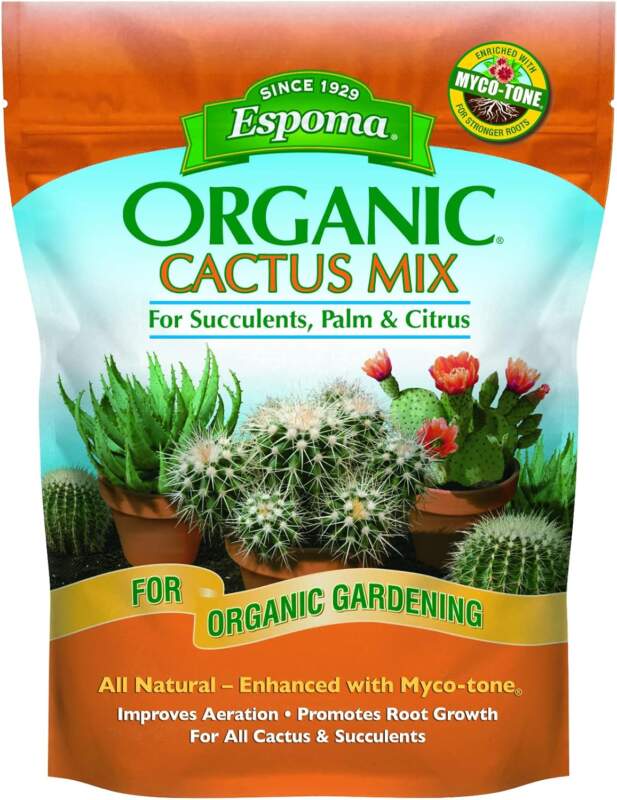
Organic Cactus Potting Soil Mix
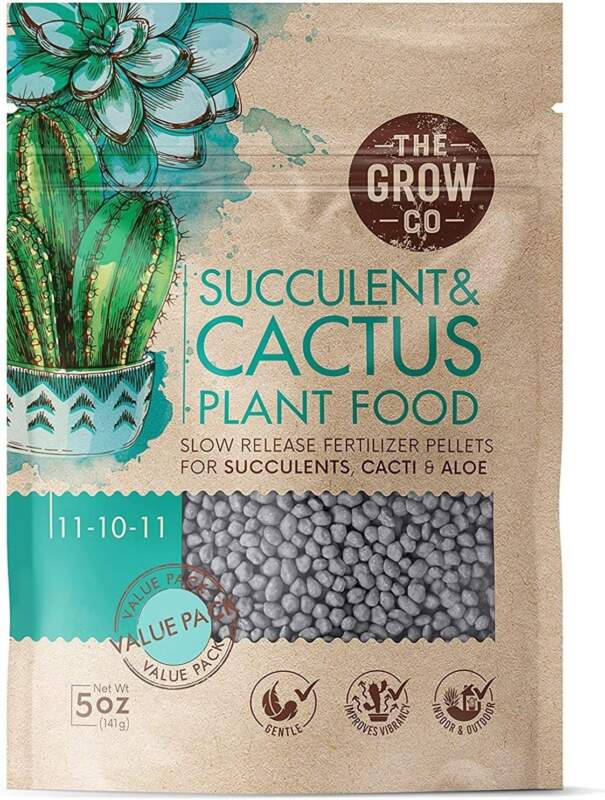
Succulents & Cactus Plant Food
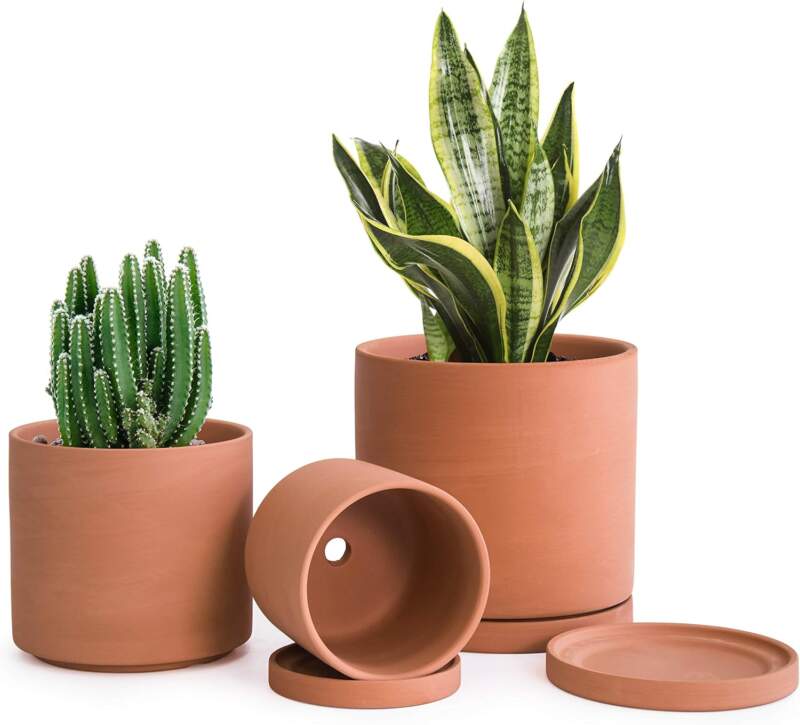
Terracotta Pots for Plants


